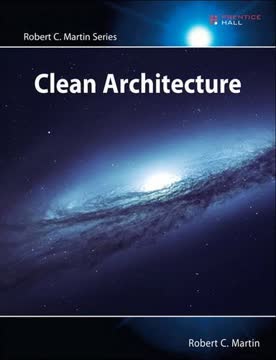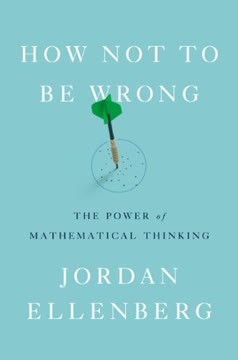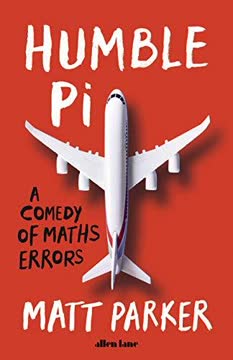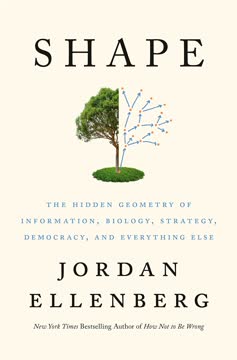Key Takeaways
1. Mathematics is the art of the shortcut
"That, my dear students, is mathematics," announced my teacher. "The art of the shortcut."
Efficient problem-solving. Mathematics, at its core, is about finding clever ways to solve complex problems with minimal effort. This concept was beautifully illustrated by the story of Carl Friedrich Gauss, who as a young student quickly solved the problem of adding numbers from 1 to 100 by recognizing a pattern and using a simple formula. This approach exemplifies how mathematical thinking can provide elegant solutions to seemingly tedious tasks.
Algorithmic thinking. The power of mathematics lies in its ability to create general algorithms that can solve entire classes of problems, rather than tackling each instance individually. This approach is not limited to pure mathematics but extends to various fields such as physics, engineering, and computer science. By identifying underlying patterns and structures, mathematicians develop tools that serve as shortcuts for solving a wide range of problems efficiently.
Practical applications. Mathematical shortcuts have practical applications in everyday life and various industries:
- Financial modeling and risk assessment
- Optimizing transportation routes
- Enhancing computer algorithms
- Predicting natural phenomena
- Improving manufacturing processes
2. Patterns provide powerful shortcuts for predicting the future
"If you can spot a pattern in data describing the past and the present then by extending that pattern further you have the chance to know the future."
Pattern recognition. The human brain is naturally wired to recognize patterns, and this ability has been crucial for our survival and progress. In mathematics, pattern recognition is a fundamental skill that allows us to make predictions and solve complex problems. By identifying recurring structures in data, we can extrapolate trends and make informed decisions about future outcomes.
Applications of patterns. Pattern recognition has wide-ranging applications:
- Economic forecasting
- Weather prediction
- Stock market analysis
- Urban planning and growth modeling
- Artificial intelligence and machine learning
Caution with patterns. While patterns can be powerful predictive tools, it's essential to approach them critically. Not all apparent patterns are meaningful or predictive. The human tendency to see patterns where none exist (apophenia) can lead to false conclusions. It's crucial to combine pattern recognition with rigorous statistical analysis and domain knowledge to avoid misleading interpretations.
3. Language and diagrams can be powerful shortcuts to understanding
"A poet would be overcome by sleep and hunger before being able to describe with words what a painter is able to depict in an instant."
Visual thinking. Diagrams, graphs, and visual representations can often convey complex ideas more efficiently than words alone. This is because our brains are highly adept at processing visual information. In mathematics and science, visual representations like graphs, charts, and diagrams serve as powerful tools for understanding and communicating abstract concepts.
Language as a shortcut. The right choice of language or notation can dramatically simplify complex ideas. For example:
- Algebraic notation allows us to represent and manipulate complex relationships succinctly
- Specialized terminology in various fields enables precise and efficient communication
- Metaphors and analogies can bridge the gap between unfamiliar concepts and everyday experience
Transformative visualizations. Throughout history, certain visual representations have revolutionized entire fields:
- Feynman diagrams in particle physics
- Periodic table in chemistry
- DNA double helix model in biology
- Supply and demand curves in economics
4. Calculus is the ultimate shortcut for optimization
"Calculus is all about this ability to substitute higher-level thinking that sees structure where before we just saw random meandering pathways."
Power of calculus. Calculus provides a set of tools for analyzing change and optimization. It allows us to find optimal solutions in various fields, from engineering to economics. By using derivatives and integrals, we can determine the best way to design a bridge, maximize profits, or minimize energy consumption.
Real-world applications. Calculus is used in numerous practical applications:
- Designing roller coasters for maximum thrill and safety
- Optimizing flight paths for spacecraft
- Predicting population growth or decline
- Analyzing financial markets and risk
- Modeling fluid dynamics in engineering
Limits and instantaneous change. The concept of limits in calculus allows us to understand instantaneous change, which is crucial for modeling real-world phenomena. This idea revolutionized physics and engineering by providing a mathematical framework for describing motion, forces, and other dynamic processes.
5. Statistical shortcuts can reveal insights from limited data
"This is the power of mathematical statistics, to be able to provide you with the confidence to make such a claim based on asking so few cats."
Sampling techniques. Statistics provides powerful tools for making inferences about large populations based on relatively small samples. This allows researchers and decision-makers to gain insights without the need for exhaustive data collection. Techniques like random sampling, stratified sampling, and cluster sampling enable us to make reliable estimates with known margins of error.
Probability and decision-making. Understanding probability helps in making informed decisions under uncertainty. Statistical concepts like:
- Confidence intervals
- Hypothesis testing
- Bayesian inference
- Regression analysis
Allow us to quantify uncertainty and make evidence-based decisions in various fields, from medicine to public policy.
Big data and machine learning. In the era of big data, statistical techniques are more important than ever. Machine learning algorithms, which often rely on statistical principles, can find patterns and make predictions from vast amounts of data. However, it's crucial to understand the limitations and potential biases in these approaches to avoid misinterpretation or overconfidence in results.
6. Network theory offers shortcuts through complex systems
"The power of the crowd to help in scientific investigation has today been much more successful than Robins' failed attempt."
Network structure. Network theory provides a framework for understanding complex systems, from social networks to transportation systems. By representing these systems as nodes (points) connected by edges (lines), we can analyze their structure and behavior. This approach reveals important properties like connectivity, centrality, and clustering.
Small world phenomenon. One of the most fascinating discoveries in network theory is the "small world" phenomenon, popularized as "six degrees of separation." This concept suggests that in many networks, including social networks, any two nodes can be connected through a surprisingly small number of intermediate connections. Understanding this property has implications for:
- Information spread
- Disease transmission
- Social influence
- Technological networks
Applications of network theory:
- Optimizing transportation and logistics
- Analyzing social media and information spread
- Studying ecological systems and food webs
- Enhancing computer network design
- Understanding brain connectivity
7. Some problems may have no shortcuts, but understanding this is valuable
"Mathematicians now believe that there is a whole slew of problems that cannot be solved without doing the hard slog of checking all the possible solutions."
NP-complete problems. There exists a class of problems, known as NP-complete problems, for which no efficient algorithms are known. These problems, like the Traveling Salesman Problem, seem to require checking all possible solutions to find the optimal one. Understanding which problems fall into this category is crucial for allocating resources effectively and managing expectations.
Implications for cryptography. The apparent lack of shortcuts for certain problems forms the basis of modern cryptography. Many encryption systems rely on the difficulty of factoring large numbers or solving other problems believed to be computationally hard. This understanding is crucial for designing secure systems and evaluating their strengths.
Limitations and opportunities. Recognizing the limitations of what can be efficiently computed is valuable in itself:
- It guides research efforts towards more tractable problems
- It encourages the development of approximation algorithms
- It inspires the search for quantum algorithms that might provide shortcuts where classical computers cannot
- It promotes a realistic understanding of what is computationally feasible in various applications
Last updated:
FAQ
What's Thinking Better: The Art of the Shortcut in Math and Life about?
- Exploring shortcuts: The book delves into how shortcuts can enhance problem-solving in mathematics and everyday life, emphasizing strategic thinking and pattern recognition.
- Mathematics as a tool: Marcus du Sautoy illustrates how mathematics serves as a powerful tool for finding shortcuts, using historical anecdotes and personal experiences.
- Real-world applications: It connects mathematical concepts to real-life scenarios, showing how understanding shortcuts can improve decision-making in various fields.
Why should I read Thinking Better: The Art of the Shortcut in Math and Life?
- Enhance problem-solving skills: The book offers insights into recognizing patterns and employing shortcuts, helping readers develop a strategic approach to challenges.
- Engaging storytelling: Du Sautoy uses captivating stories to illustrate mathematical concepts, making complex ideas accessible and enjoyable.
- Broader perspective on mathematics: It encourages seeing mathematics as a mindset for understanding the world, applicable to everyday situations.
What are the key takeaways of Thinking Better: The Art of the Shortcut in Math and Life?
- Power of patterns: Recognizing patterns is a fundamental shortcut for predicting outcomes and solving problems efficiently.
- Language in mathematics: Changing the language or representation of a problem can lead to clearer understanding and solutions.
- Shortcuts vs. cutting corners: The book distinguishes between clever shortcuts and merely cutting corners, advocating for a deeper understanding of concepts.
How does Thinking Better relate mathematics to everyday life?
- Practical applications: Mathematical shortcuts can optimize real-world problems, such as travel routes or financial decisions.
- Decision-making strategies: Employing mathematical thinking improves decision-making processes in everyday situations.
- Interdisciplinary connections: The book links mathematics to fields like economics and art, highlighting its versatility in understanding complex systems.
What is the significance of patterns in Thinking Better?
- Foundation of reasoning: Patterns are central to mathematical reasoning, allowing predictions and efficient problem-solving.
- Real-world examples: Patterns in economics and natural phenomena inform decisions and strategies, like predicting market trends.
- Fibonacci sequence: The book discusses the Fibonacci sequence in nature, illustrating mathematics' role in describing biological growth.
What are some examples of shortcuts discussed in Thinking Better?
- Gauss's arithmetic shortcut: Gauss quickly summed numbers by recognizing a pattern, demonstrating strategic thinking.
- Memory palaces: This technique involves associating information with locations in a familiar space for easier recall.
- Logarithms: John Napier's invention transformed complex multiplications into simpler additions, revolutionizing calculations.
How does Thinking Better address the relationship between laziness and innovation?
- Laziness as a motivator: A desire to avoid hard work can lead to innovative thinking and the discovery of shortcuts.
- Historical examples: Famous mathematicians found inspiration in idleness, emphasizing the importance of mental wandering.
- Balancing effort and efficiency: While laziness can inspire shortcuts, hard work is often necessary for mastery.
What role does language play in Thinking Better?
- Language as a tool: The way problems are framed impacts our ability to solve them, with language revealing new insights.
- Algebra and geometry: Algebra serves as a language for expressing ideas, allowing for clarity and efficiency in problem-solving.
- Cultural implications: Different languages shape our understanding of concepts, influencing thought processes.
How does Thinking Better illustrate the importance of diagrams?
- Visual shortcuts: Diagrams convey complex ideas more effectively than words, aiding understanding and communication.
- Historical examples: Florence Nightingale's rose diagram is a compelling visual representation that drove healthcare change.
- Diagrams in mathematics: They simplify complex ideas, like imaginary numbers, emphasizing visual thinking's value.
What is the significance of calculus in Thinking Better?
- Understanding change: Calculus is a fundamental tool for analyzing dynamic systems, essential for navigating a universe in flux.
- Historical impact: Developed by Newton and Leibniz, calculus revolutionized science and mathematics, transforming our understanding.
- Applications in various fields: Calculus is versatile, applicable in economics, engineering, and art, solving a wide range of problems.
How does the author use historical examples in Thinking Better?
- Engaging storytelling: Historical anecdotes make complex concepts relatable and engaging, illustrating mathematical evolution.
- Lessons from mathematicians: Stories of figures like Gauss and Newton showcase their contributions and challenges.
- Contextualizing concepts: Placing ideas within a historical framework enhances understanding and relevance.
What role do heuristics play in decision-making as discussed in Thinking Better?
- Mental shortcuts: Heuristics simplify decision-making, allowing quick judgments without extensive analysis.
- Bias and errors: Relying on heuristics can lead to cognitive biases and errors, highlighting the need for awareness.
- Improving choices: Recognizing heuristics helps question assumptions and make more informed decisions.
Review Summary
Thinking Better by Marcus du Sautoy receives mixed reviews. Many readers appreciate the book's exploration of mathematical shortcuts and historical anecdotes. Some find it engaging and insightful, praising du Sautoy's enthusiasm and accessible explanations. However, others feel the book doesn't fully deliver on its promise of improving thinking skills or providing practical shortcuts. Some readers struggle with the mathematical concepts, while others wish for more real-life applications. Overall, the book is generally viewed as an interesting, if sometimes challenging, read for those interested in mathematics and problem-solving.
Similar Books









Download PDF
Download EPUB
.epub digital book format is ideal for reading ebooks on phones, tablets, and e-readers.






